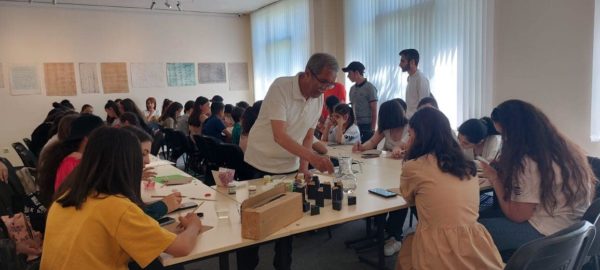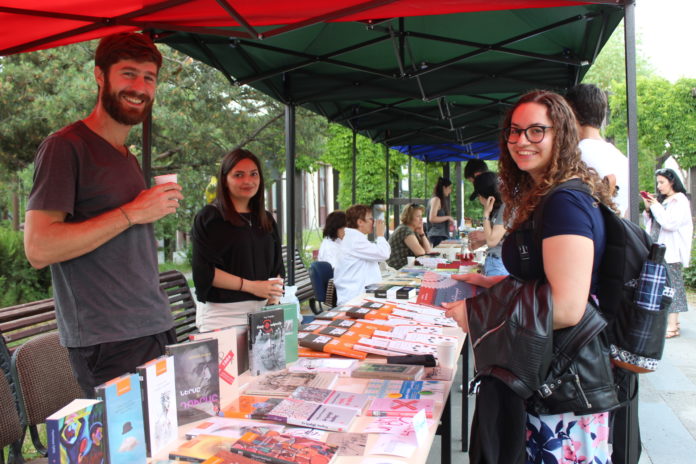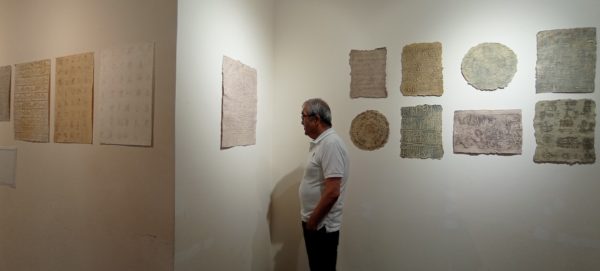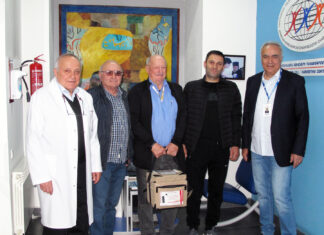BERLIN — When Mesrob Mashtots arrived in Echmiadzin with his alphabet, he was happier (in the words of his biographer Koriwn) than was Moses descending with the holy tablets from Mount Sinai. Truly, his invention of the Armenian alphabet in 405 A.D. marked the beginning of a new era for the nation and the people. If human language is one of the characteristics that distinguishes us as a species, each written script is what identifies us as a people. And the fact that Armenians were so fortunate to have a magnificent phonetic alphabet so early contributed to development in the cultural and religious realm, in literature and music.
The growth of a rich language culture, maintained and transmitted over centuries through manuscripts and printed books, has been a crucial factor in preserving Armenian national and cultural identity through centuries, despite conflicts, conquests, expulsions and even the threat of extinction through genocide. In 1512 Armenia was one of the earliest Christian nations of the Orient to print books, a fact commemorated 500 years later by UNESCO, when it named Yerevan world book capital.
In early manuscripts of the Bible and other religious works, the written word soon became the object of an art form, known as calligraphy. The graceful, elegant forms shaped by Mesrop as letters in the alphabet lent themselves to transformation into objects of beauty. From the earliest manuscripts to later printed books, calligraphy and illustrations became an integral component of literature. And the Mashtots-Matenedaran Manuscript Institute in Yerevan houses thousands of magnificent examples.
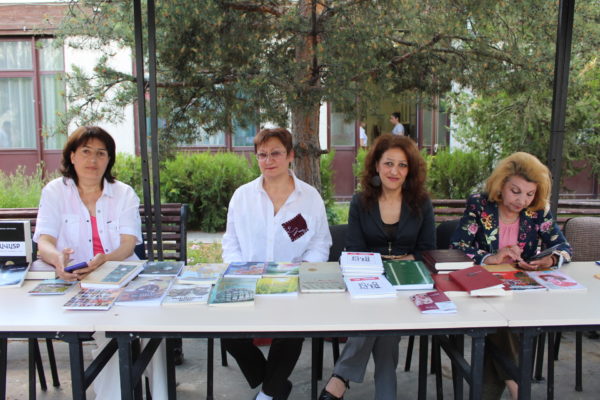
At Gallery 25 in Gyumri
In Gyumri, the cultural capital of Armenia, an important initiative is preserving this heritage. The project is called “Book Art & Calligraphy 2” and it opened on June 8 at the Berlin Art Hotel/Gallery 25. This is its second year. Financed by the Ministry of Culture and Sports of Armenia, it is organized and implemented by the “Für Armenien” foundation. The purpose of the initiative is to re-evaluate the role of the manuscript-book in Armenian life and it covers a variety of topics, the core of which is book art and calligraphy. Gallery 25, founded in 2001, includes 16 active members and artists, who organize exhibitions and events in the Berlin Art Hotel.
This year the events which lasted over several days, opened with an exhibition, entitled, “Archetypes”, featuring the works of Ararat Sarkissian, who is an Honored Artist of the Republic of Armenia. He created this series about three decades ago, presenting the alphabets of ancient peoples, including Assyrian, Urartian, Egyptian, Mayan, among others. Following the vernissage of the exhibition, the artist delivered a lecture-master class.
